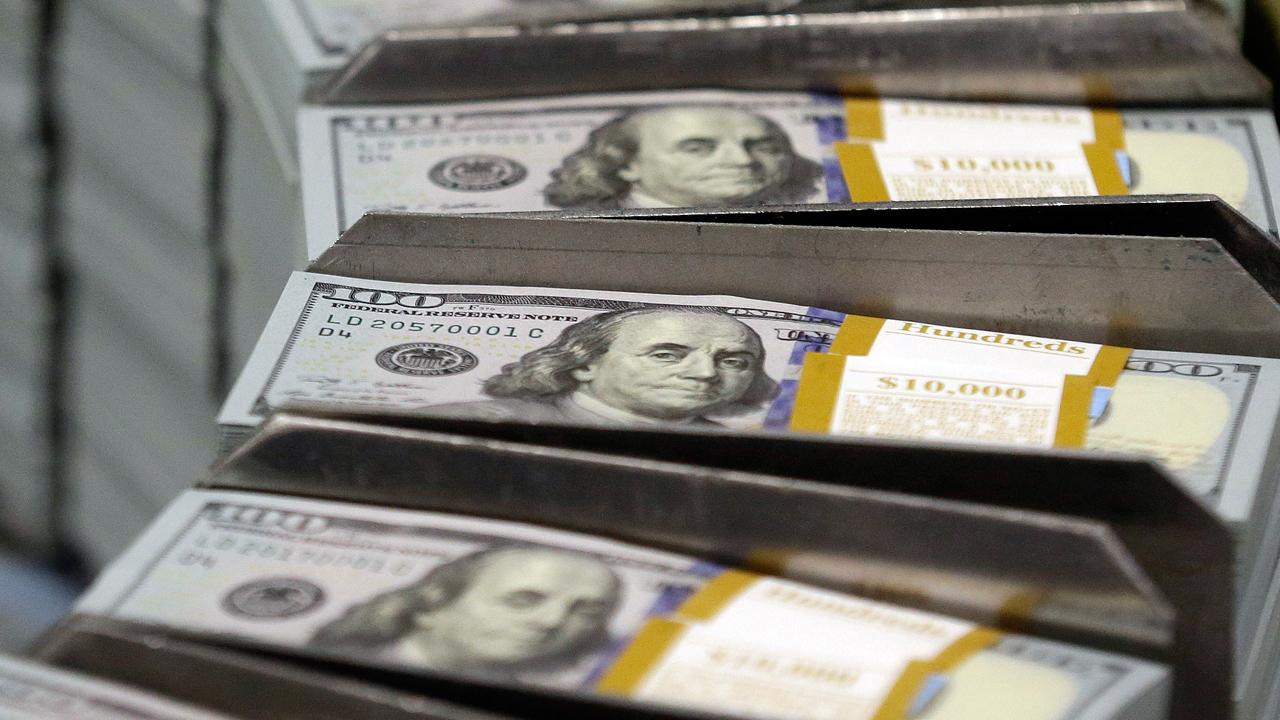Ralph Lauren's American dream: from rags to riches
How a working-class guy from the Bronx became a billionaire fashion icon.
Ralph Lauren was a working-class guy from the Bronx before he became a billionaire fashion icon.
The self-taught designer, who worked his way up from rags to riches by taking big business risks and never resting on his laurels, democratized American fashion, making stylish clothing accessible to all. Lauren's rise to success is chronicled in the upcoming documentary "Very Ralph," out Tuesday on HBO, produced and directed by Susan Lacy, the award-winning filmmaker behind "American Masters" and "Spielberg."
Ralph Lauren and his wife Ricky Lauren. (Neil Rasmus/BFA.com).
"He was an ordinary guy who had an ambition for life to go beyond what he experienced, and he did it step-by-step with no master plan, no training what so ever," Lacy told FOX Business.
"He was an ordinary guy who had an ambition for life to go beyond what he experienced."
The son of Jewish immigrants, Lauren, born Ralph Lifshitz, grew up in a two-bedroom apartment in the Bronx. He'd go to the movies, an escape from his humble upbringing, where he'd dream of the lifestyles he saw on screen before building his version of an idolized world through fashion.
"He saw a world he wanted to be part of, and found a way to make that his life,” Lacy said. "He was obsessed with his own taste, and he was determined to live the life he began to dream of when he was a young kid going to the movies."
Lauren's budding fashion label began when he designed wide-cut neckties with colorful patterns that looked like the ones he saw actor Douglas Fairbanks Jr. wearing. He made them out of rags at first, and sold them out of a drawer in the Empire State Building. He landed a $50,000 loan in the late 1960s to start his menswear brand that would later be called "Polo," and got the attention of Bloomingdale's department store. A buyer at the time asked Lauren to take his name off the neckties and put their private label on instead, but Lauren said no.
Ralph Lauren started his iconic designer label by designing ties.
"When he walked away from Bloomingdale's, that was a really big thing to do because he didn't have a penny in the bank. He was about banking on himself," Lacy said. "It wasn't like he was thinking, 'I'm a pioneer,' he was also a lucky guy who had good instincts, and they paid off, but he took risks."
Lauren speaks candidly about his upbringing in the film, which also features interviews with his wife Ricky and other family members, designers like Donna Karan, Calvin Klein and Karl Lagerfeld, and admirers like Vogue editor Anna Wintour, Martha Stewart and Hillary Clinton.
How much did Lacy get to know the notoriously private designer for the film?
"He does not wear his wealth on his sleeve," Lacy answered. "We were lamenting on 'how do we get our kids to visit us on weekends and make sure we have a relationship with our grandkids?' and how to look good as you age."
Lauren, who just turned 80, built his lifestyle empire on his own idealized version of the American dream, branching out from ties to a full menswear line, then expanding to women’s clothing, fragrances and homeware. And while people can buy his elite duds at luxury stand-alone Ralph Lauren stores around the globe, the brand is available at discount stores like TJ Maxx, Kohl's and its factory-outlet stores.
"He democratized fashion. To me, that was a really interesting theme in the film. He came from a working-class background. He understood that if he was going to want these things other people would too," Lacy said. "He had very expensive labels, but he also made things at different price points that were attainable for everyone."
"He does not wear his wealth on his sleeve."
Designers around the world began associating American fashion with Ralph Lauren and the brand became known for capitalizing on an aspirational lifestyle evoking a sense of timeless elegance juxtaposed with a relaxed, effortlessly chic sophistication. The company went public in 1997, with Goldman Sachs purchasing more than a quarter of the company. Lauren stepped down as CEO of Ralph Lauren Corp. in 2015.
| Ticker | Security | Last | Change | Change % |
|---|---|---|---|---|
| RL | RALPH LAUREN CORP. | 197.63 | -0.16 | -0.08% |
Like other brands, Ralph Lauren has faced growing pains of having to remain relevant to new consumers, according to the film. Recently, the brand aimed to appeal to younger shoppers with its "Friends"-inspired collection at Bloomingdale's for the sitcom's 25th anniversary (Jennifer Aniston's character Rachel Green worked at Ralph Lauren on the show).
RALPH LAUREN DESIGNS 'FRIENDS' COLLECTION WITH JENNIFER ANISTON'S RACHEL GREEN IN MIND
Still, there continues to be a strong demand for the brand internationally. Sales of Ralph Lauren's Polo shirts and tweed jackets helped the retailer beat quarterly profit estimates last week, sending its share up nearly 14 percent.
Ralph Lauren started the Ralph Lauren company more than 50 years ago with a tie collection. He named his clothing line Polo because he felt the sport polo was classic and elegant.
Lacy says Lauren's success came from taking big risks, having a healthy ego and always staying grounded.
CLICK HERE TO GET THE FOX BUSINESS APP
"This is a man that flies on gut instinct – people admire that and relate to that and wish they were like that. Most people aren't. Most people are timid," Lacy said. "Ralph's story is so much more of a cultural story than it is a fashion story. He'd be the first to agree with that."

